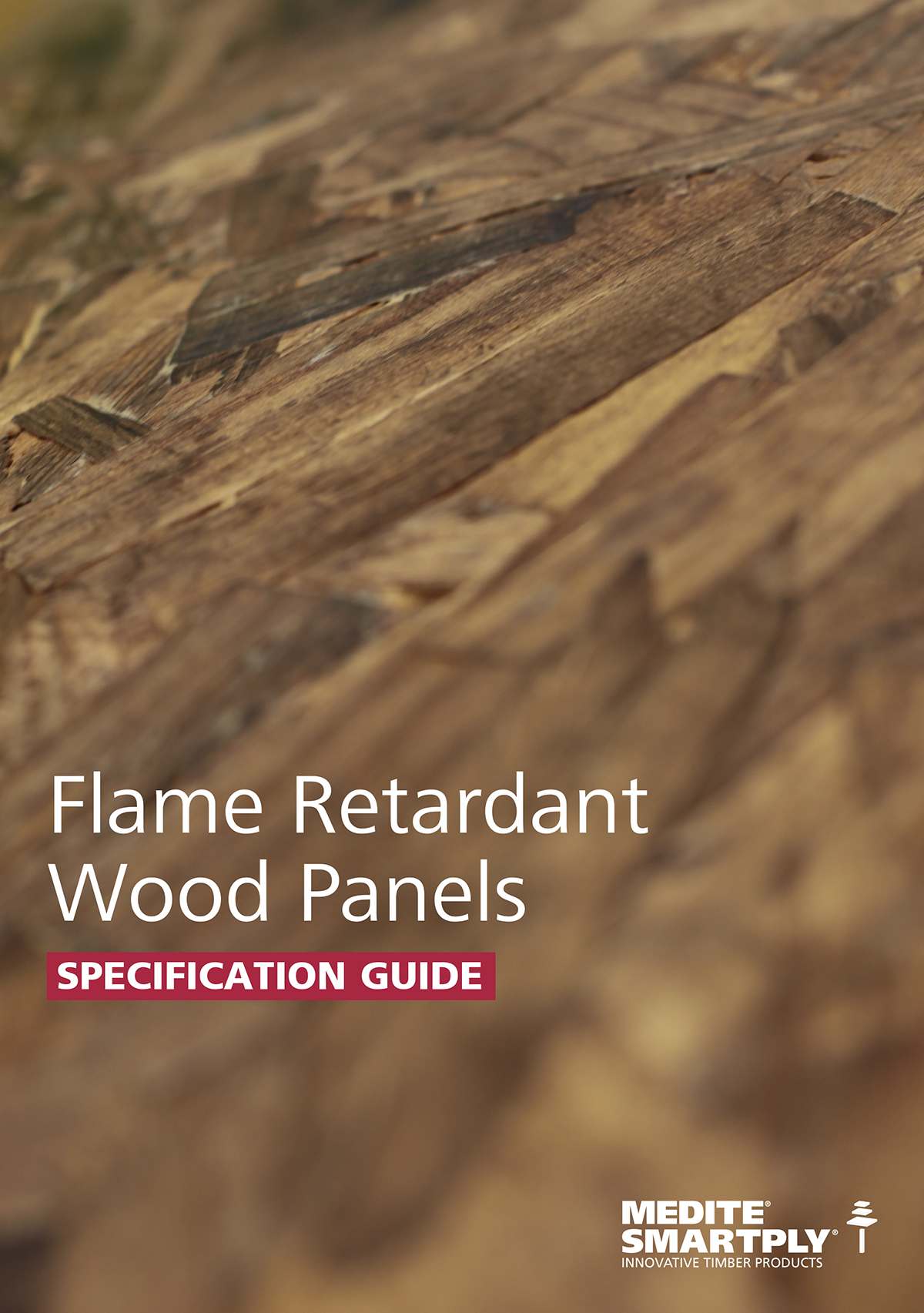In part one of this specification guide to flame retardant wood panels, innovative timber product specialist MEDITE SMARTPLY offers a comprehensive overview of the terminology covering these materials and related fire testing standards
Flame retardant wood panels have been developed specifically for use in fire-rated applications where a Euroclass B or Euroclass C material is required under the Building Regulations.
The terms used to describe the fire performance of a wood panel is related to the stages of a fire’s development and growth, from ignition to spread, flashover and decay.
Examining key elements of flame retardant wood panels
The guide examines the key elements of panels’ performance, including details of reaction to fire properties and related standards, European fire test classes and enhanced Euroclass classification, which contains information about the amount of smoke and burning droplets produced when a material burns.
Some situations require that the durability of a panel’s reaction to fire performance are declared against the environmental conditions in service and moisture levels.
The guide sets out the three service classes defined in the structural design code BS EN 1995-1 and the three categories of flame retardant formulations used by the Wood Protection Association. Each of these types is distinguished by the properties that make them suitable for particular service classes.
Finally, the guide includes a look at resistance to fire performance. While reaction to fire measures how a material will contribute to the early stages of a fire, this covers how a construction element performs in a fire over a specified period of time – a critical element in containing a blaze and preventing its spread.
Resistance to fire is a property of a particular construction element, rather than the materials used to make that element. Indeed, most construction elements contain a combination of different materials and it is the performance of this finished product – and their fixings – that must be tested by exposing them to levels of heat of an actual fire to determine resistance.
As with reaction to fire tests, fire resistance tests are harmonised across Europe. The guide includes the European Standards for testing, covering general requirements, non-load-bearing and load-bearing walls, floors and roofs.



